Watercolour Mediums
Winsor & Newton Watercolour Mediums are used to change the rate of drying, increasing gloss, improve flow or provide texture. They provide water colourists with limitless opportunities to add special effects and add variations to their water colour paintings. In addition, a selection of these mediums are also suitable for use with Designers' Gouache. These are Aquapasto, Gum Arabic, Texture Medium, Ox Gall Liquid, Blending Medium and Lifting Preparation.
Art Masking Fluid
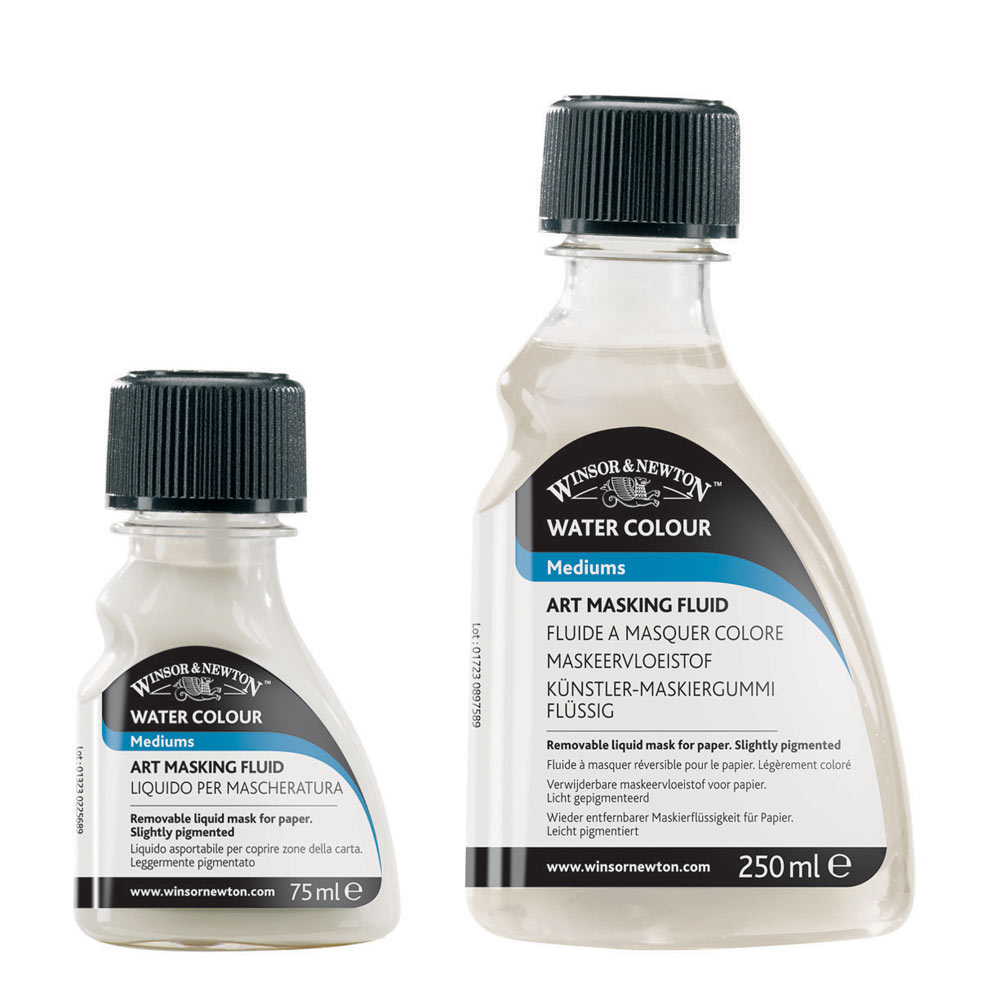 Art Masking Fluid is a liquid with added pigmentation for masking areas of work needing protection when colour is applied in broad washes. It is composed of rubber latex and pigment. For best results remove as soon as possible after application. Brushes can be cleaned if washed immediately with water after use.
Art Masking Fluid is a liquid with added pigmentation for masking areas of work needing protection when colour is applied in broad washes. It is composed of rubber latex and pigment. For best results remove as soon as possible after application. Brushes can be cleaned if washed immediately with water after use.
Sections treated with Art Masking Fluid must be allowed to dry before overpainting. Once dry these areas remain protected and cannot be penetrated by colour.
How is it used?
Masking Fluid protects areas of your work when colour is applied in broad washes. Unlike Permanent Masking Medium which is inter-mixable with water colours, Art Masking Fluid works by direct application to the paper. It can be applied to white paper or previously coloured areas. Follow these helpful tips to get the best results when masking.
Shake bottle before use.
Do not use on wet or damp paper.
Use gelatine surface sized paper, this helps to prevent the fluid from adhering too strongly to the paper.
Use old brushes or dip pens to avoid damaging valuable brushes.
Wash brushes in soapy water immediately after use.
Ensure fluid is dry before applying colour.
Do not leave fluid on paper for long periods of time.
Use Colourless Art Masking Fluid if there is any risk of staining from the pigmented Art Masking Fluid.
If spilt by accident, wash item immediately in soapy water. Once dry, the latex can only be removed by picking at it or rubbing with an eraser. There are unfortunately no solvents available.
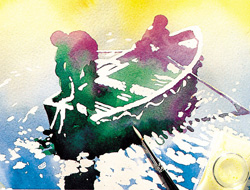
Colourless Art Masking Fluid
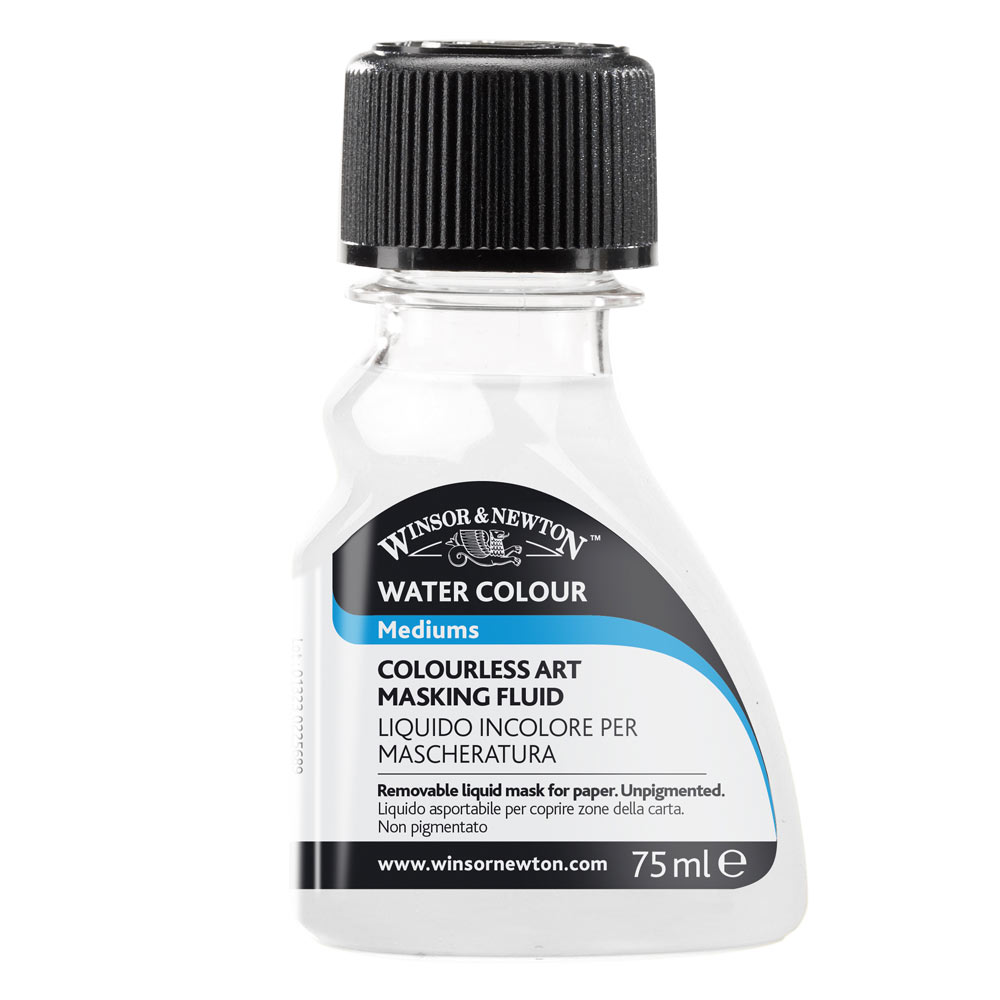
Colourless Art Masking Fluid is simply a colourless version of Art Masking Fluid.
A colourless liquid for masking areas of work needing protection when colour is applied in broad washes. Specifically designed for soft sized papers to avoid staining. For best results remove as soon as possible after application.
The fluid is composed of rubber latex. Brushes can be cleaned if washed immediately with water after use.
What is the difference between Colourless Art Masking Fluid and Art Masking Fluid?
Art Masking Fluid has a slight yellow tine making it easier to see where it has been used.
However, if a softer sized paper is used or there is any risk of yellow staining the paper, Colourless Art Masking Fluid should be used.
Gum Arabic
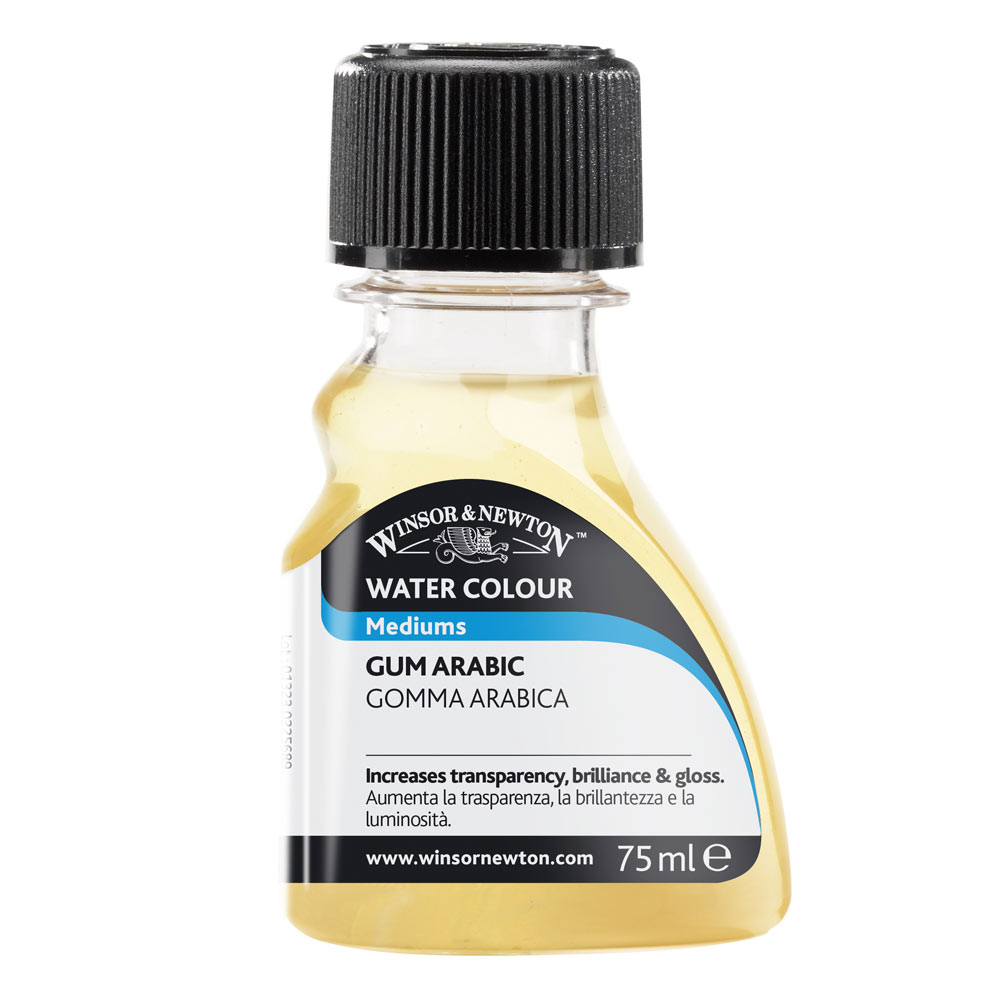 Gum Arabic is a pale coloured solution that increases the gloss and transparency of water colour. It can be thinned with water.
Gum Arabic is a pale coloured solution that increases the gloss and transparency of water colour. It can be thinned with water.
Adding Gum Arabic to a water colour wash will have the following effects:
it will slow the drying time of your paint, giving you slightly longer to work on creating your image or working wet into wet
it increases transparency and gloss to give greater brilliance of colour, giving you luminous colours
it reduces the staining of pigments, making washes easier to lift
How is it used?
Gum Arabic is usually mixed into the water colour wash but can be added to the jar of water if you prefer to use it throughout the painting. Gum Arabic should not be used directly from the bottle because thick films will be brittle.
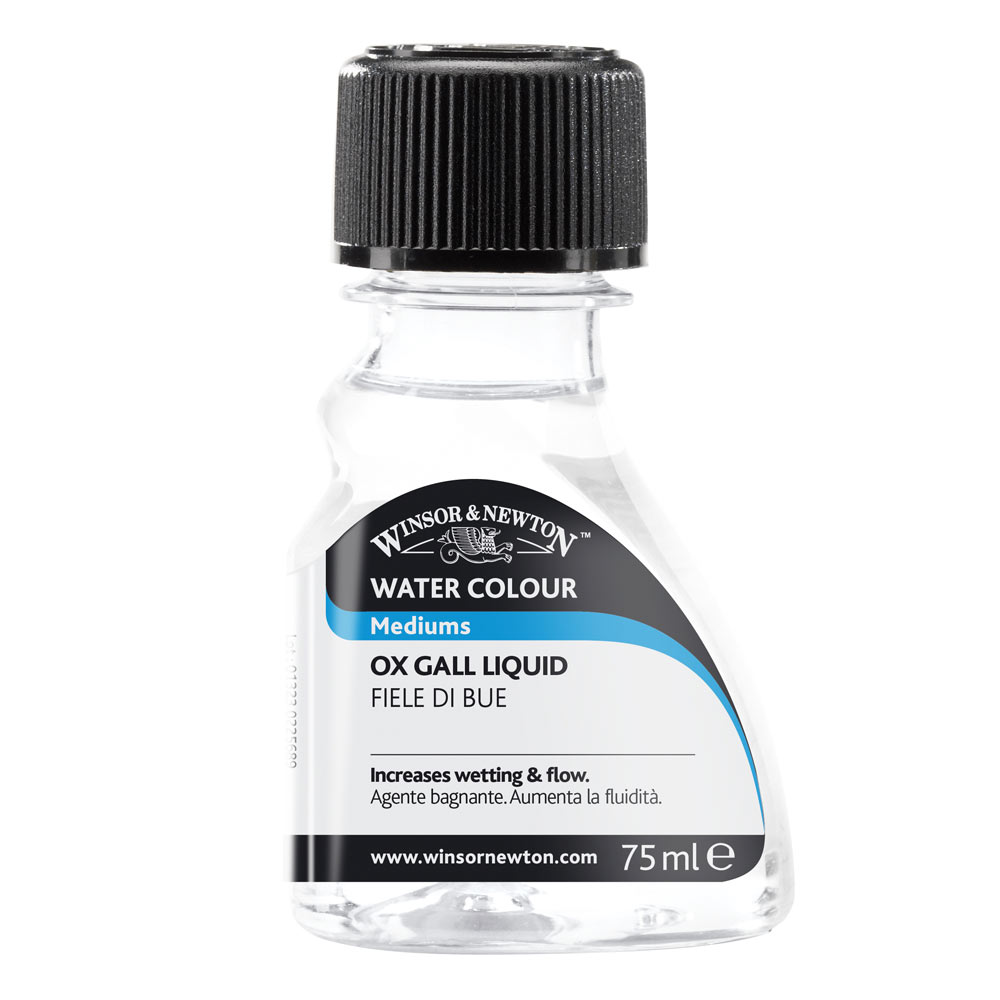
Ox Gall Liquid
Ox Gall Liquid is a wetting agent used to improve flow when mixed directly with water colours. It can also be used on very hard sized papers to reduce surface tension.
How is it used?
A few drops of Ox Gall are added to a jar of water and this is used to dilute the water colour.
Ox Gall is also used on very hard sized papers to reduce surface tension. If a paper is resisting a water colour wash, leave it to dry before covering the paper with the diluted Ox Gall. Once this is dry the painting can be continued as normal.
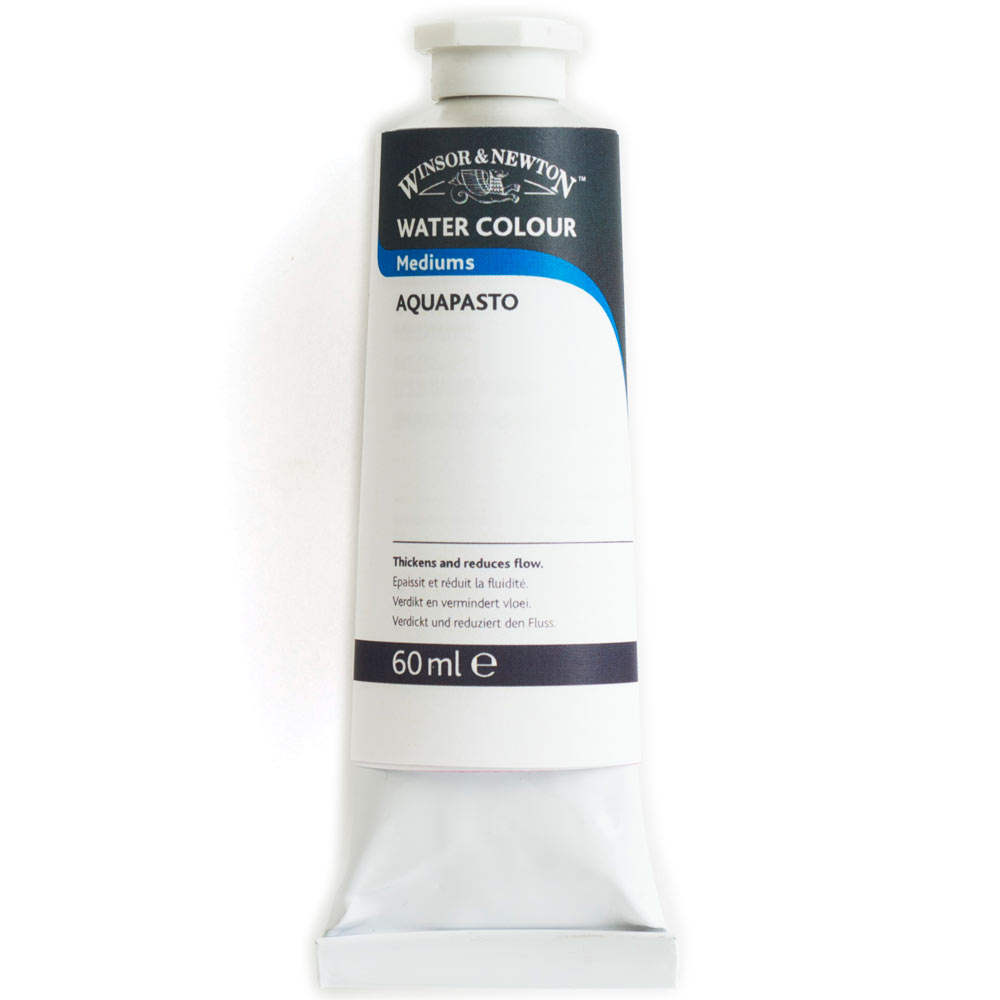
Aquapasto
Aquapasto is a transparent gel medium that reduces flow and gives a bodied effect to water colour and gouache.
How is it used?
Aquapasto is mixed with water colours to thicken the wash. It is a gel medium that is squeezed onto the palette and just enough can be added to the water colour wash until the wash thickens.
Tube colours are easier to use for stronger washes or when large amounts are required. Aquapasto washes will not flow into each other so they are excellent for clouds or multi-coloured areas.
Granulation Medium
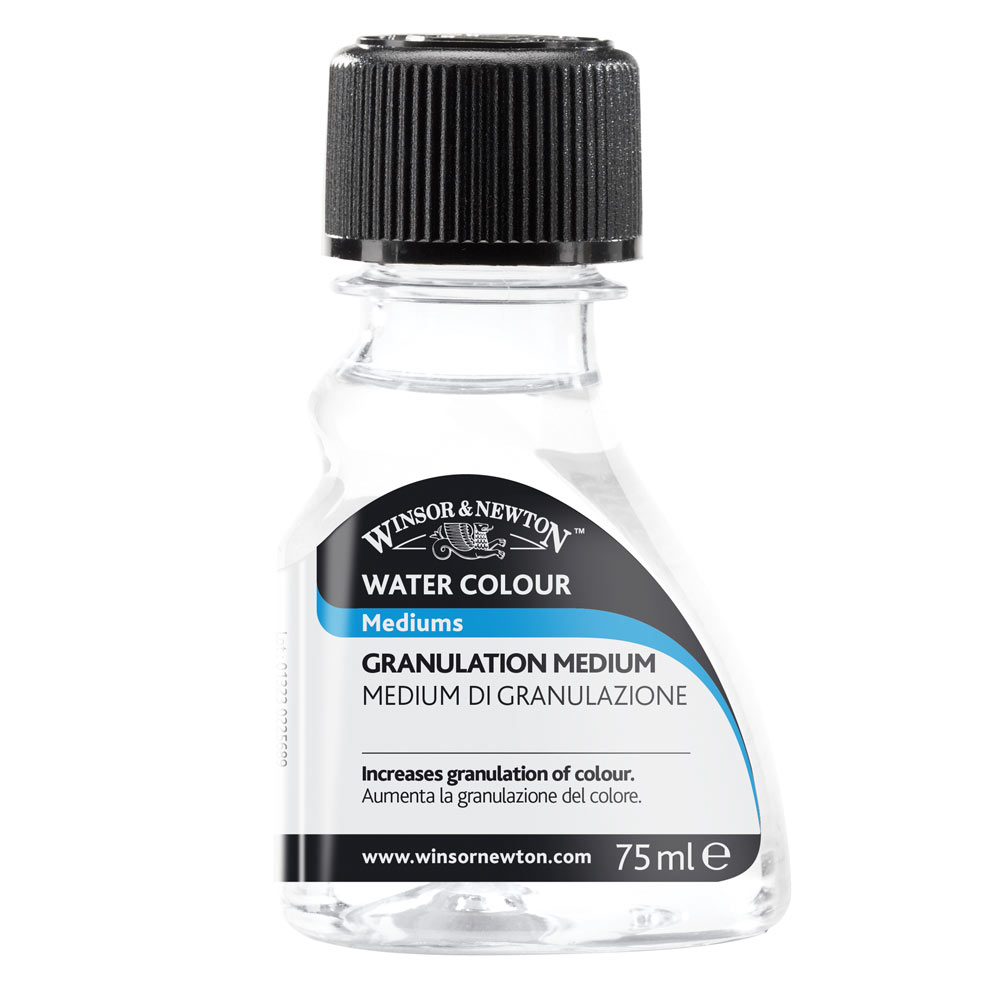
 Granulation Medium gives a mottled or granular appearance to colours which usually give a smooth wash, such as Winsor Red or Winsor Blue. By adding granulations Medium to colours that already granulate, such as Viridian or French Ultramarine, the effect is further enhanced.
Granulation Medium gives a mottled or granular appearance to colours which usually give a smooth wash, such as Winsor Red or Winsor Blue. By adding granulations Medium to colours that already granulate, such as Viridian or French Ultramarine, the effect is further enhanced.
Granulation is popular wherever you want to add interest or dimension to otherwise flat areas.
Techniques for use
This medium is useful in all water colour techniques including landscape, seascape or figurative work. Granulation is popular where ever you want to add interest or dimension to otherwise flat areas.
How is it used?
For maximum effect, dilute water colours with medium alone. By diluting the colour further with water, a variety of results can be achieved. Granulation Medium is re soluble simple by re-wetting.
Granulation is also greatly affected by different water colour papers. For maximum granulations use Rough and for less granulation use a Cold Pressed/ Not Surface.
Lifting Preparation
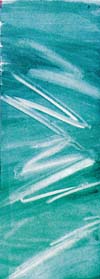
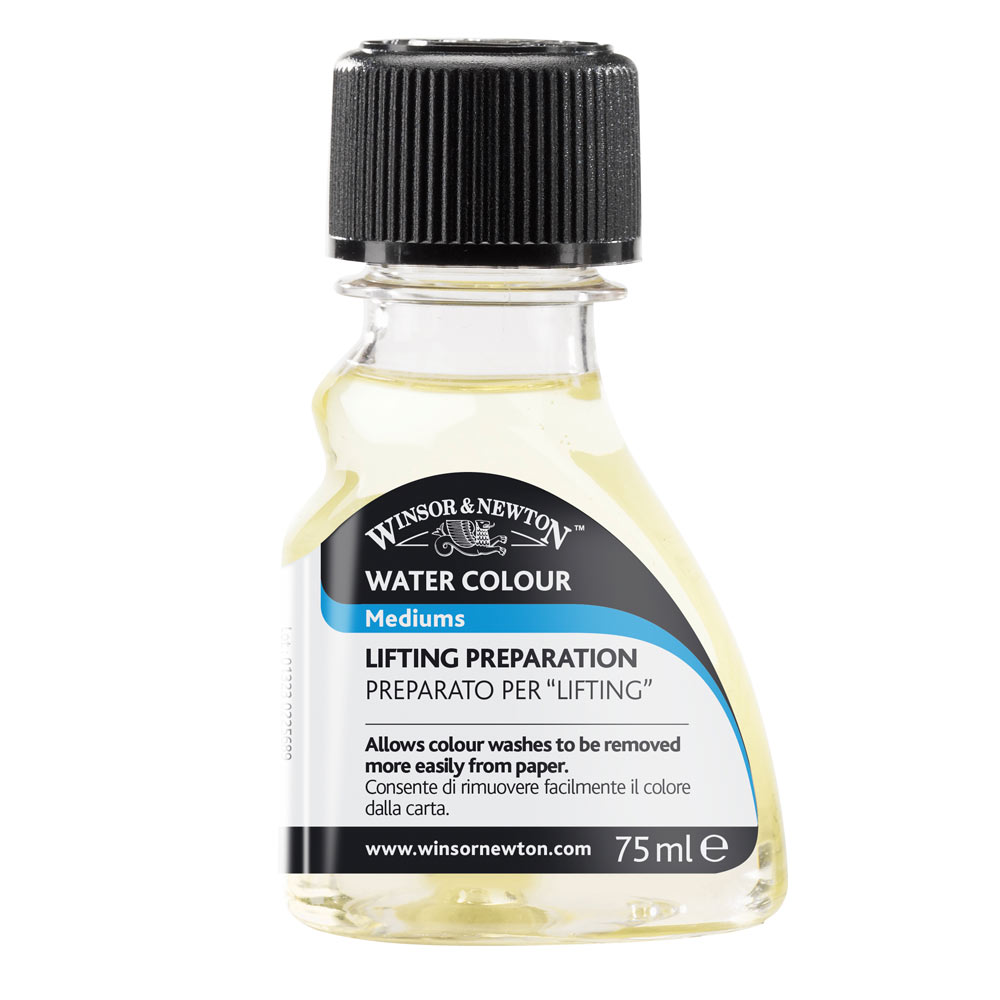 Lifting Preparation allows dry washes, including staining colours, to be more easily lifted from paper with a wet brush or sponge. It is an ideal preparation with which beginners can prime the paper allowing corrections to be made to their painting.
Lifting Preparation allows dry washes, including staining colours, to be more easily lifted from paper with a wet brush or sponge. It is an ideal preparation with which beginners can prime the paper allowing corrections to be made to their painting.
How is it used?
Lifting Preparation must be applied to the paper first and allowed to dry. Apply to the whole surface and allow to fully dry. Once dry, continue painting washes as normal over the lifting preparation and allow these to dry.
Areas or details can then be removed by taking a soft brush dipped in tap water, gently moistening the area to be removed and blotting off the dissolved colour.
For larger areas a sponge can be used in place of the brush.
This process can then be repeated until the required degree of removal is achieved. The removed areas can then be left white or overpainted with further washes .
Washes will be most successfully lifted within five or six hours after the initial application, but will remain more removable than if paper alone had been used.
Lifting Preparation does not make the water colour more soluble so there is no worry about multiple washes becoming muddy.
Permanent Masking Medium
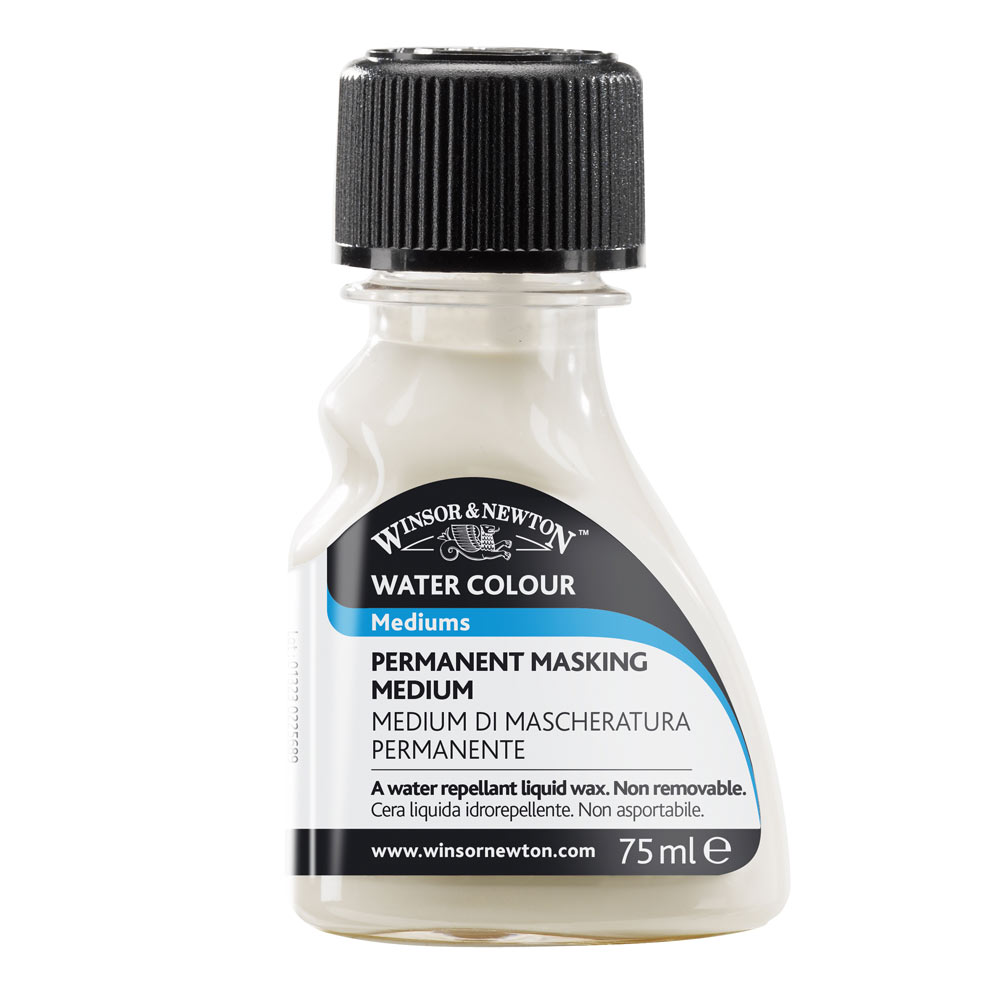
 Permanent Masking Medium is used to mask specific areas of paper, making them resistant to water. It can also be mixed with water colours and is ideal for isolating areas of fine detail. Unlike Art Masking Fluid, Permanent Masking Medium is not removable.
Permanent Masking Medium is used to mask specific areas of paper, making them resistant to water. It can also be mixed with water colours and is ideal for isolating areas of fine detail. Unlike Art Masking Fluid, Permanent Masking Medium is not removable.
How is it used?
Permanent Masking Medium can be applied directly to white paper, to dried washes on the paper or mixed with water colours first. All water colour washes mixed with Permanent Masking Medium remain open and workable whilst the wash is still wet. Once dry, the area becomes isolated and cannot be fully penetrated by further washes. A hair dryer can be used to speed the drying. Brushes should be washed in warm water and soap before using other colours.
The example below shows areas of paper treated with Permanent Masking Medium and allowed to dry. When the water colour wash is then painted over these areas they remain isolated.
How does Permanent Masking Medium differ from Art Masking Fluid?
• Permanent Masking Medium is not removable
• Permanent Masking Medium can be added to colour
• Brushes are easier to clean
• Art Masking Fluid is recommended for crisp whites, larger areas of masking and is faster drying whilst Permanent Masking Medium is recommended for fine detail and expressive effects within the painting.
Blending Medium
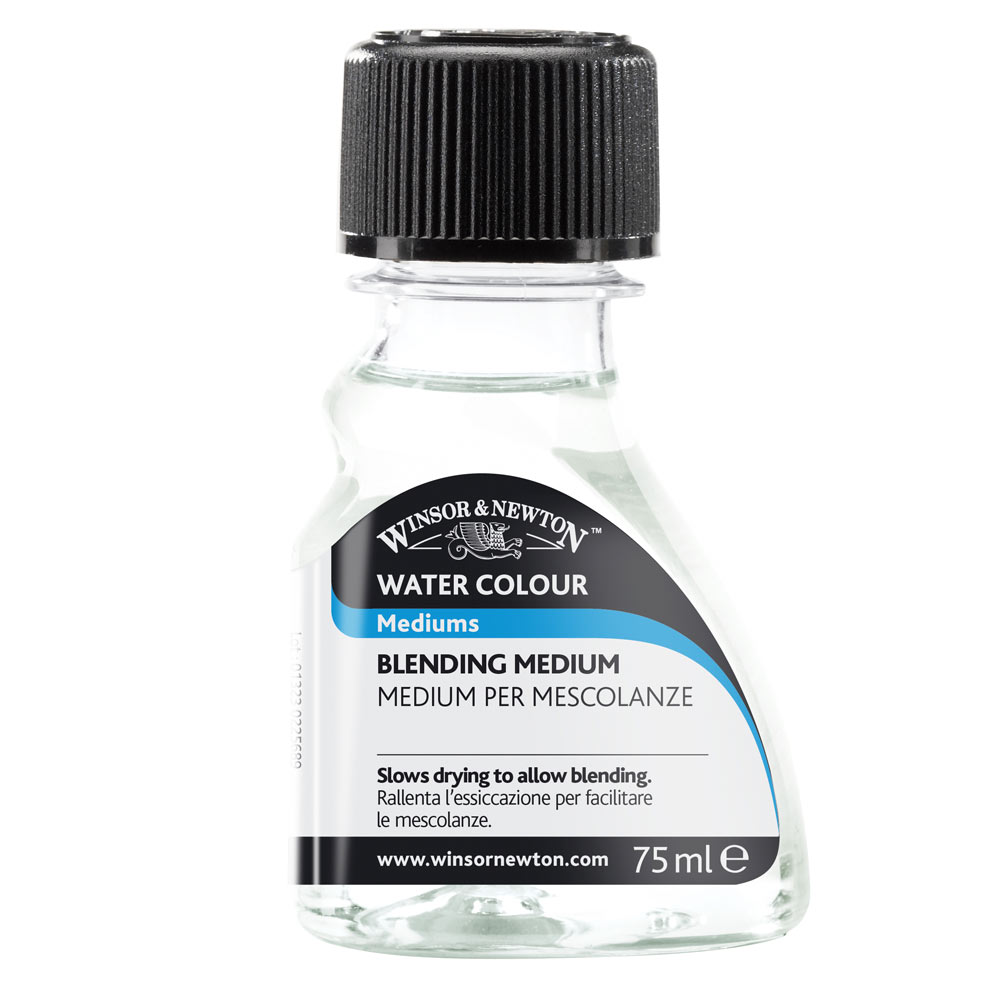
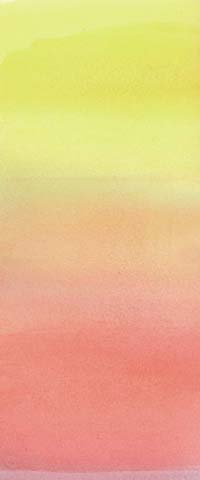 Blending Medium is a liquid used to slow the drying rate of water colours allowing more time for blending. It is particularly useful in hot climates where artists would like their water colours to stay open and workable for a longer period of time.
Blending Medium is a liquid used to slow the drying rate of water colours allowing more time for blending. It is particularly useful in hot climates where artists would like their water colours to stay open and workable for a longer period of time.
How is it used?
Blending medium can be used in a number of different ways. For maximum blending time, mix the medium directly with the water colour. Alternatively you can apply the medium directly to the paper in preparation for the water colour.
Dilution with water will provide a variety of blending/ drying times. Drying rates will vary and depend on the temperature and air flow. Any initial beading of colours will disperse as blending continues.
Once dry, further washes can be applied over any washes which include blending medium.
Texture Medium
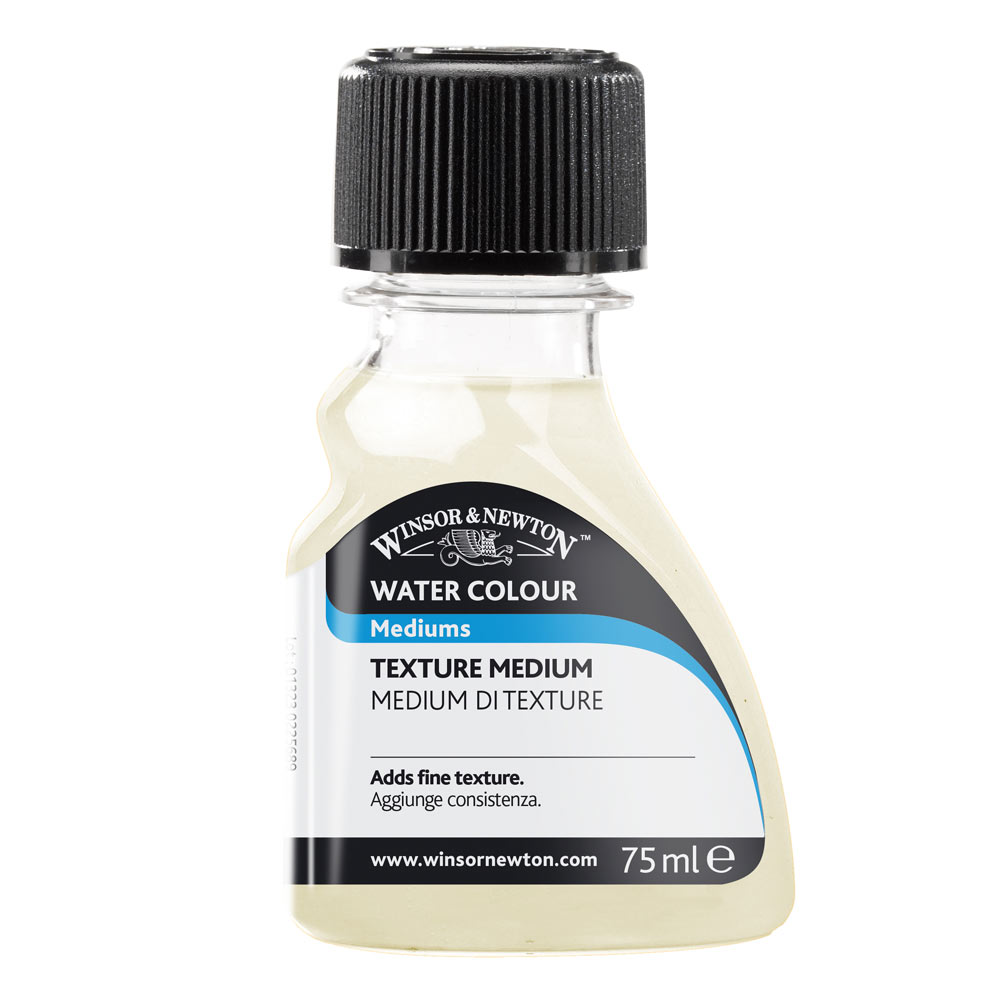
 Texture medium contains fine particles and can be used to give the impression of depth and structure to water colour paintings. It is ideal for emphasising areas such as sandy beaches or the bark of a tree in figurative paintings. Used with multiple washes, Texture Medium catches different layers of colour and really gives a new dimension to water colour painting.
Texture medium contains fine particles and can be used to give the impression of depth and structure to water colour paintings. It is ideal for emphasising areas such as sandy beaches or the bark of a tree in figurative paintings. Used with multiple washes, Texture Medium catches different layers of colour and really gives a new dimension to water colour painting.
How is it used?
Texture Medium can be applied directly onto the paper or mixed with water colours first. More layers of colour can be applied over the top. Texture Medium is re soluble but like all water colour washes, some colour will remain on the paper.
Iridescent Medium
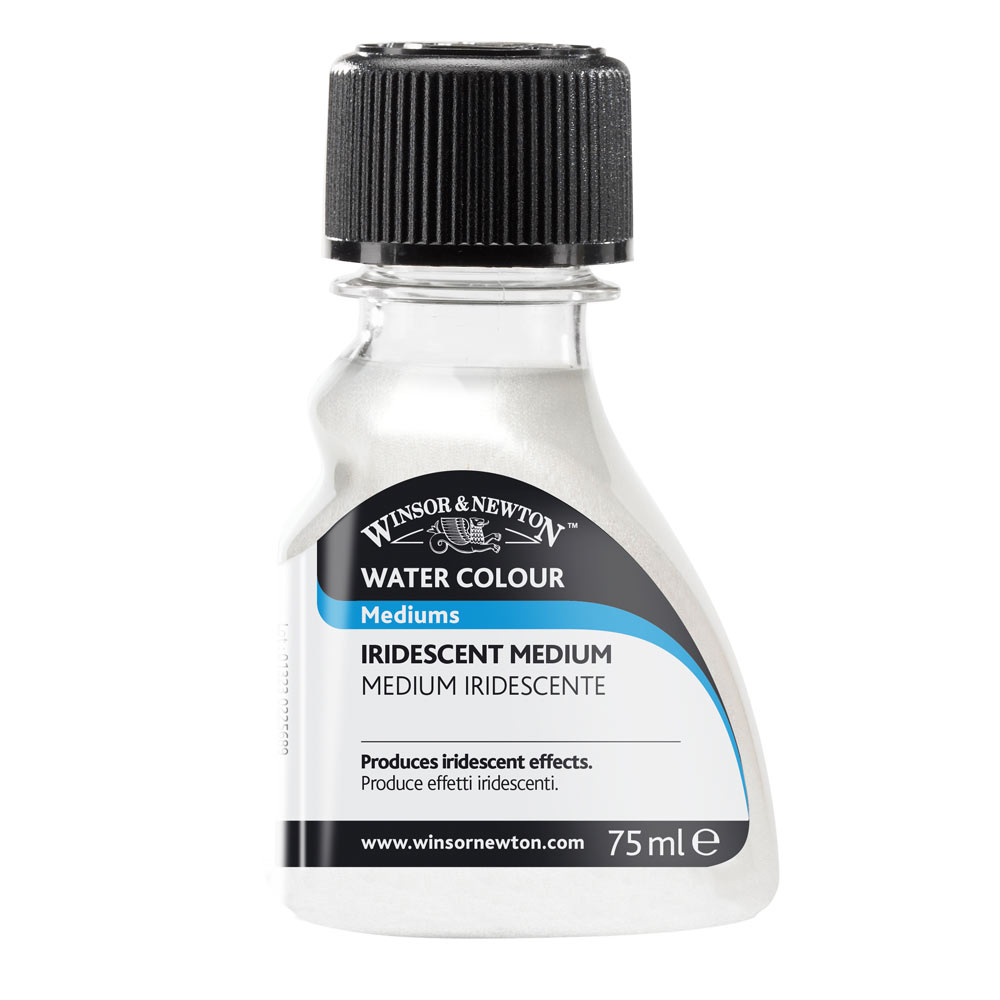
 Iridescent Medium gives pearlescent or glitter effects to your water colours. It can be mixed directly with water colours or applied over a dried wash.
Iridescent Medium gives pearlescent or glitter effects to your water colours. It can be mixed directly with water colours or applied over a dried wash.
How is it used?
Iridescent Medium can be mixed directly with water colours or applied over a dried wash. The medium is intermixable with all Winsor & Newton water colours and is particularly effective when mixed with the most transparent colours and over dark backgrounds.
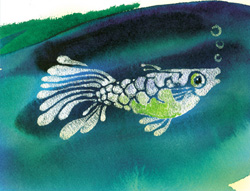
Other Special Effects
Water colour is well suited to numerous special effects. Impressive results can be achieved very quickly with these simple tricks of the trade.
Salt for added texture
If salt is sprinkled onto a water colour wash, it will absorb the wet colour. Once dry, it is brushed away, leaving a pitted texture. Try fine and coarse salt for different effects.
Splatters and Splashes
Extra tone, texture and solidity is provided by splattering colours over an underpainting. Make a stencil to protect the areas you want un-splattered. Mix a darker wash and use a hog brush to flick the colour on in different concentrations. You can also splatter with masking fluid at the beginning of the work if you want white splatters instead. Remember not to leave the fluid on for longer than you have to.
Sandpaper
Sanding a finished wash can be a useful rescue technique. If you finish a painting and find it lacking highlights, sanding is an option. Using a coarse sandpaper, lightly remove some of the paper, leaving a mottled wash with highlights. Be careful or you'll rub too much off and make the picture worse! Washes will not go on evenly over sanded paper.
Cling film (protective food film)
Intricate washes of various tones are quickly made by the use of cling film! Apply a wash to your chosen area, crumple up some cling film and press it onto the wash, making sure not to smudge or move the wet colour. Leave this to dry whilst you have a break.
When you peel the film away the texture is ready made. Try this with blended washes of more than one colour for even more varied texture.











